Last updated on February 29, 2024
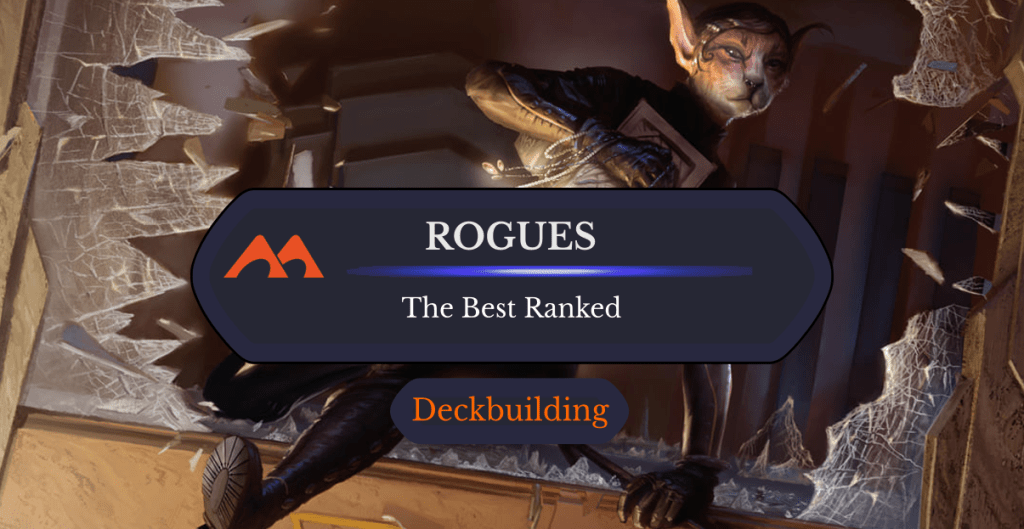
Jewel Thief | Illustration by Joe Slucher
So, you’re building a rogue deck eh? What’s the theme, Sea Creature Voltron? Worldfire Group Hug? Turning your opponents’ creatures into walls and destroying them with Siege Dragon? Oh wait, you’re building a deck around the rogue creature type. Why didn’t you say so?
Rogues are a sneaky bunch in Magic, usually associated with mill and saboteur effects and sporting underhanded tactics to slip past your opponents’ defenses. As it turns out, they’re fairly popular in Commander. Let’s don the Cloak and Dagger and pick out the best rogues in Magic.
What Are Rogues in MTG?
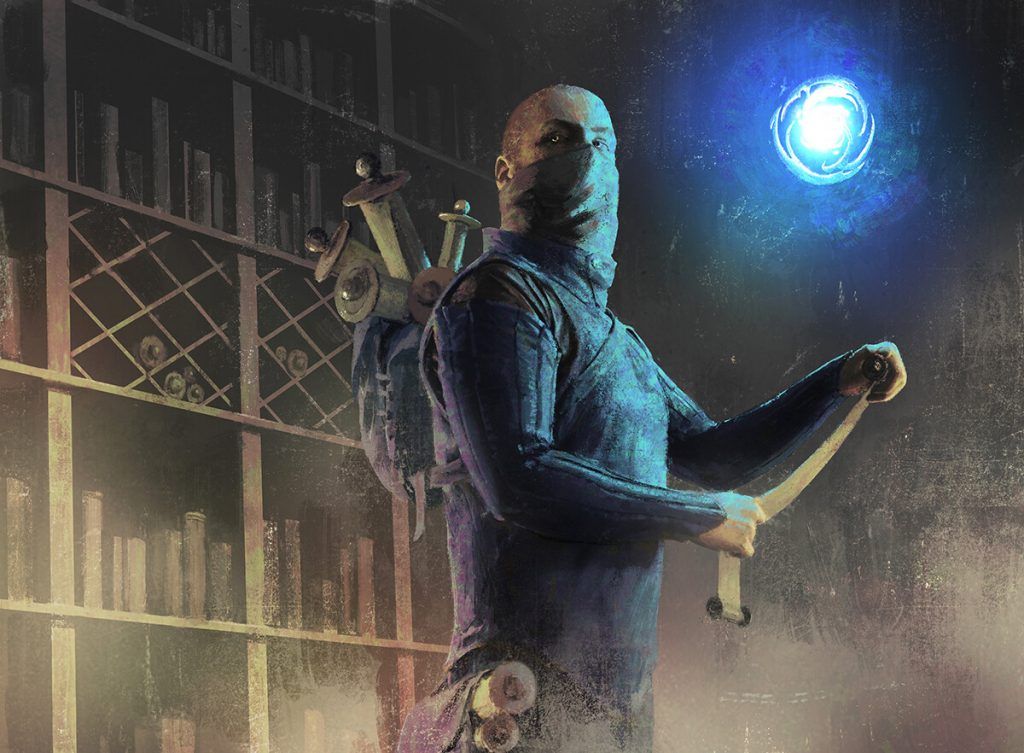
Agent of Treachery | Illustration by Igor Kieryluk
Rogue is a creature type in Magic that appears across all colors, but is heavily associated with the color pair. Rogue’s often used to denote creatures with “sneaky” abilities. These can be a variation of becoming unblockable, or a saboteur effect that triggers when the creature deals combat damage.
Rogue’s considered a class type, so it’s nearly always associated with a species or race of creatures (i.e. human rogue, merfolk rogue) and rarely appears as a standalone creature type (Vislor Turlough is a rare exception). It’s also one of the four types for the party mechanic introduced in Zendikar Rising.
Today we’re sifting through some seedy alleys and treacherous locales to weed out the best rogues in Magic. The actual creature type won’t be relevant in many cases, but you’ll notice some recurring themes across many of the rogues mentioned here. We’re keeping things Commander-focused, though you bet some Constructed all-stars will make an appearance too.
Honorable Mentions
If you’re building a rogue typal deck, you’re likely interested in cards that create rogue tokens, but aren’t actually rogue creatures themselves. Bitterblossom and Currency Converter deserve special mention as excellent rogue-adjacent cards that don’t quite fit the context of our list, but still reach staple-status for a rogue typal strategy.
#47. Thieves’ Guild Enforcer

You might remember Thieves' Guild Enforcer from a top-tier Standard deck some rotations ago. It got you started on turn 1 and began milling towards the 8-card threshold on Zendikar Rising rogues. It loses some oomph in Commander, where the buff is inconsequential and milling your opponents is detrimental if you’re not going all the way.
#46. The Master, Multiplied
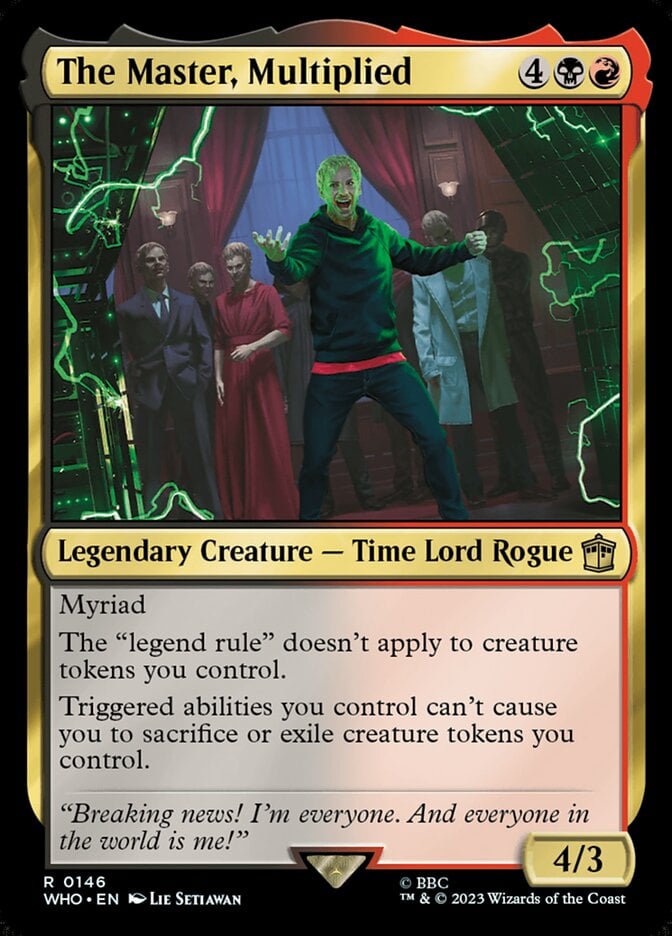
Of all the different Masters in Doctor Who, The Master, Multiplied is the most intriguing. It’s designed to allow you to keep myriad tokens, but the rules text works with so much more. It breeds a truly unique archetype, though the uniqueness of the strategy doesn’t quite make up for the weakness of a 6-mana 4/3.
#45. Robber of the Rich
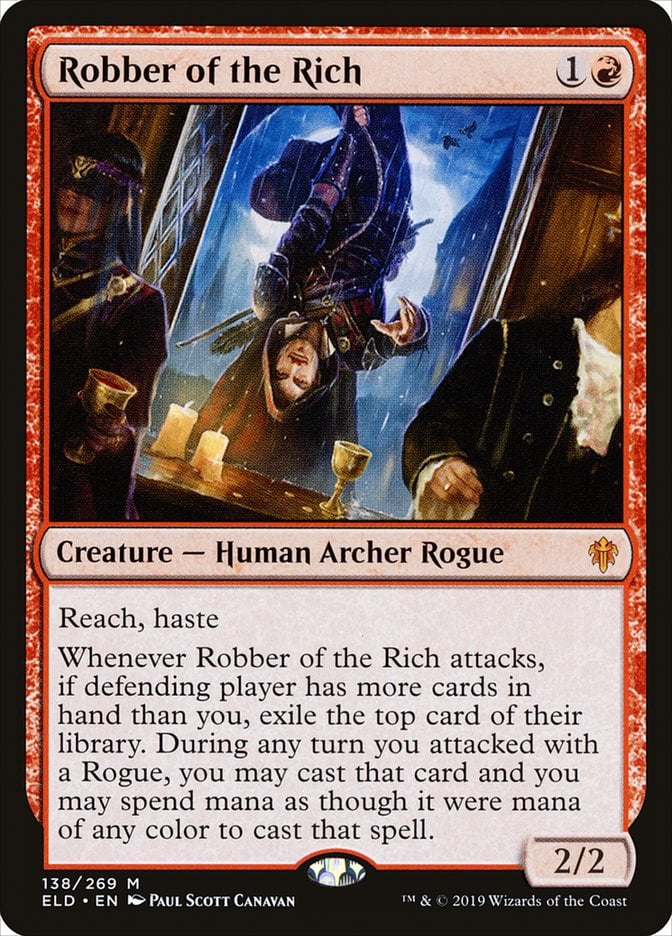
Robber of the Rich is one of the few Rogues that’s not blue or black. It technically has rogue typal text, but works all on its own. A 2/2 with haste isn’t nearly as exciting in Commander as this card was in Standard, but I’m still a fan of the Robin Hood flavor and the secret archer-reach here (I always assumed because Robin Hood reaches to pick peoples’ pockets).
#44. Eloise, Nephalia Sleuth
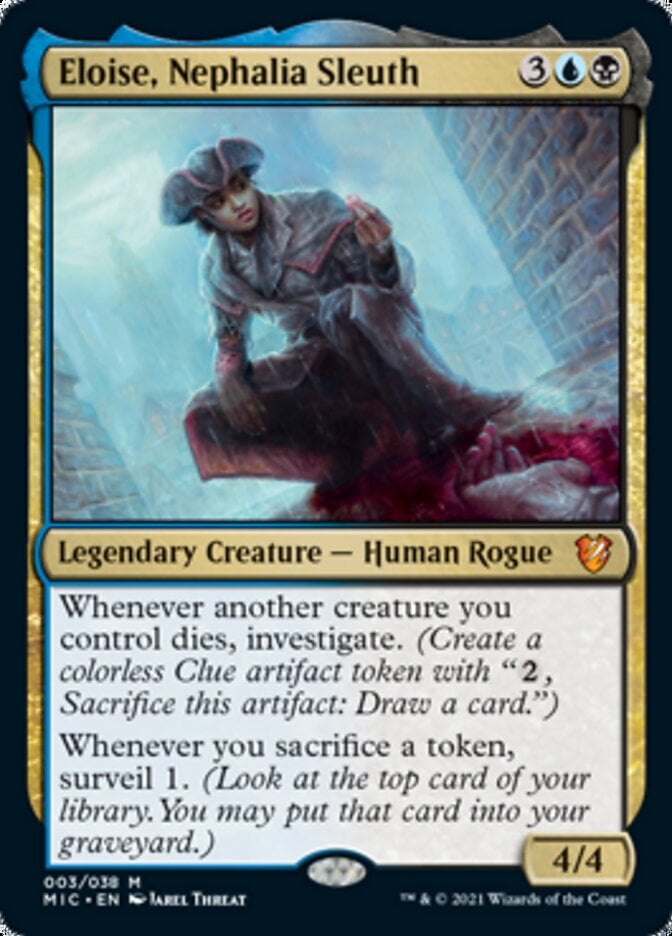
Somehow Eloise, Nephalia Sleuth dodged being errata’d into a detective? Rogue it is. I’ve never seen this card do anything other than obvious March of the Machines combos, so I’m lower on it than everybody else. I still can’t get over this random investigator being a 4/4. Packing some heat under that hat, Eloise?
#43. Soaring Thought-Thief

If rogues are even a subtheme of your deck, you’re probably running Soaring Thought-Thief. As rogues often do, the Thought-Thief crosses milling with rogue typal abilities so it’s possible to have all the text matter in a single deck.
#42. Oona’s Blackguard
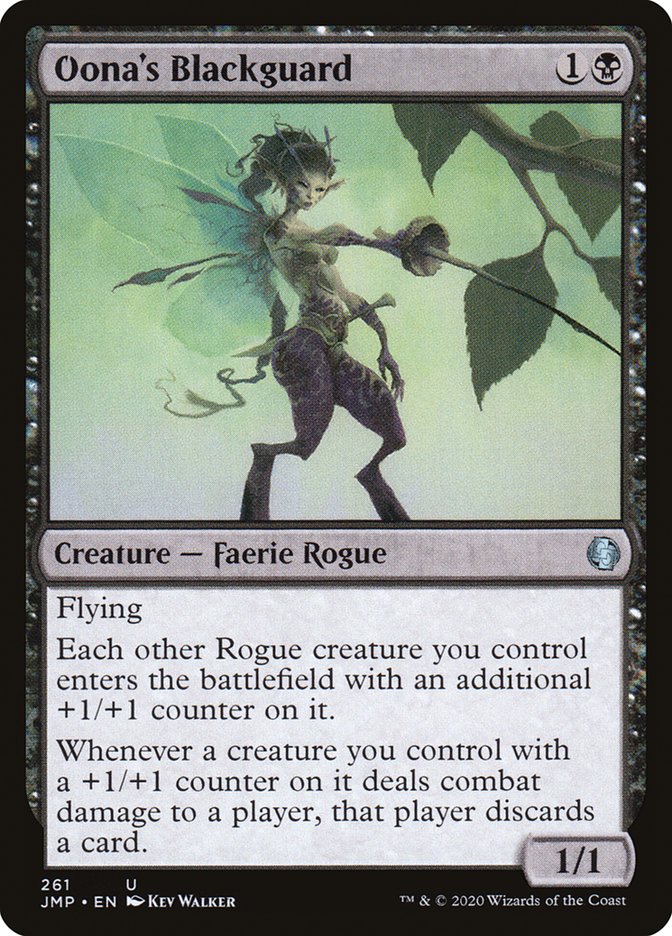
Oona's Blackguard is a mainstay of rogue typal decks, though it can be used as a generic +1/+1 counter payoff. We love a multi-faceted queen in this household.
#41. Chevill, Bane of Monsters
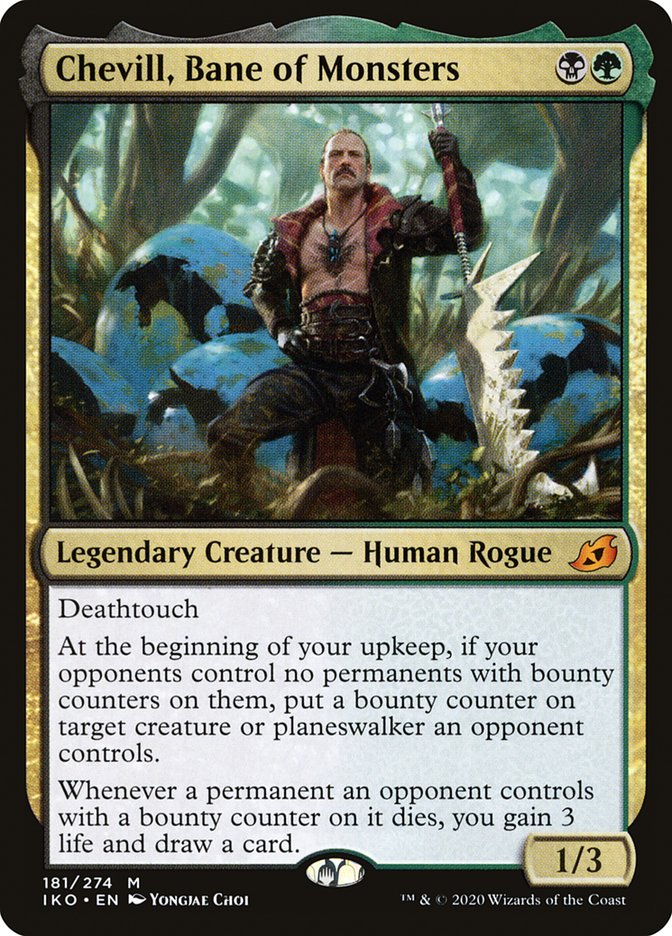
Chevill, Bane of Monsters captures the flavor of a monster-hunter well enough, but it has a fatal flaw. A new bounty can’t be marked until the first one’s dealt with, and you must place a bounty counter if possible. Chevill can get stranded in limbo if you can’t claim the first bounty. It’s a hilarious foil to The Ozolith, which picks up bounty counters from your opponent’s creatures when they die.
#40. Rankle, Master of Pranks
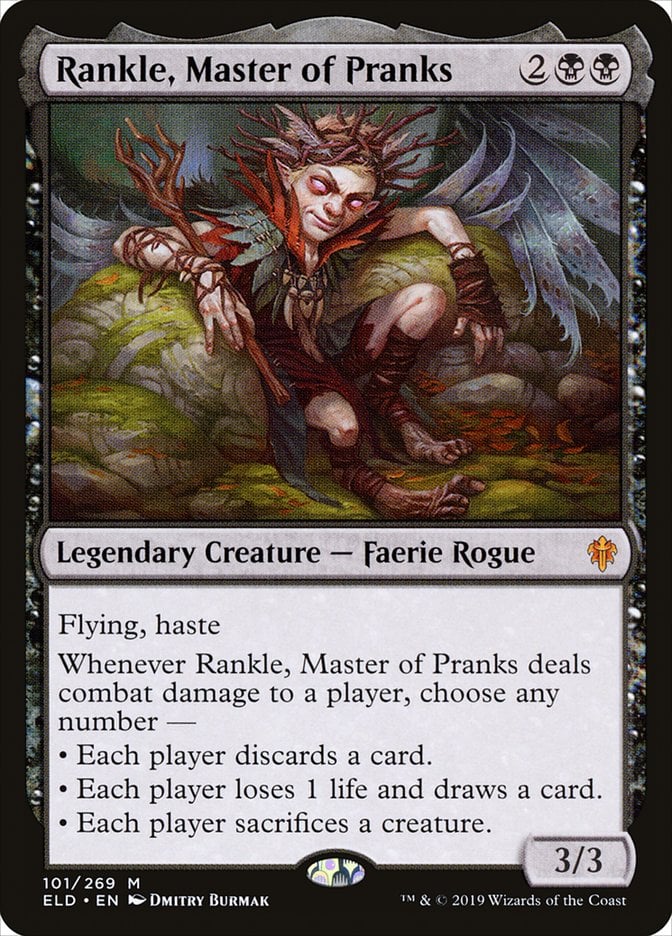
Rankle’s a good little bean. Rankle, Master of Pranks gives you a lot of control over player resources, whether that’s through attacking board presence, life totals, or cards in hand. You have complete control over Rankle’s trigger, assuming you keep connecting with it in combat. Interestingly, Rankle and Torbran isn’t a rogue, so maybe Torbran set Rankle on the straight and narrow.
#39. Marvo, Deep Operative
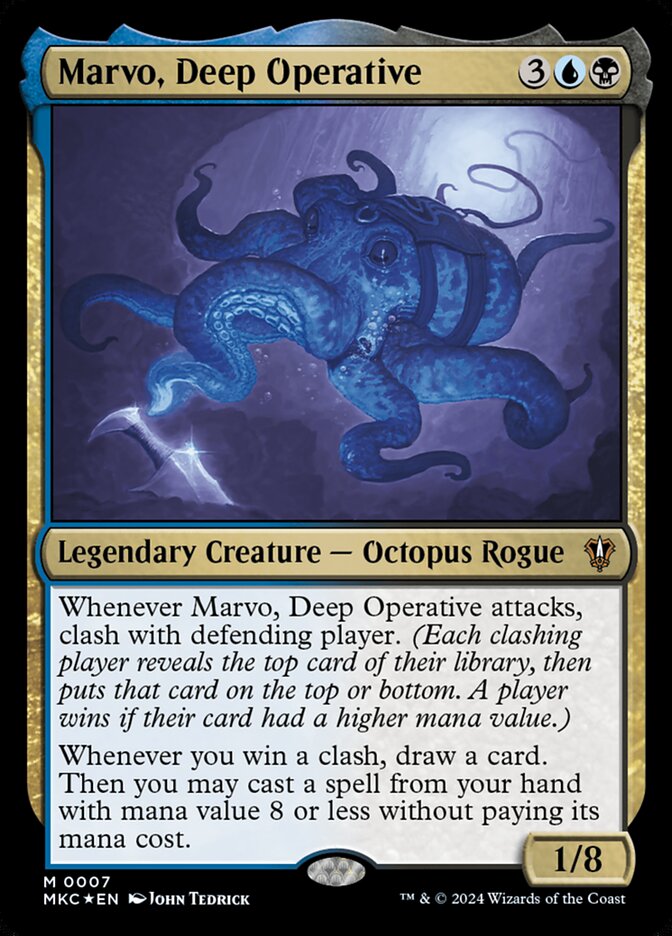
Marvo, Deep Operative is still too new for me to have a verdict, but it’s interesting at least. Fill a deck with expensive spells so you win clashes, which let you cast those spells for free? I’d say that’s a solid 8/10.
#38. Evelyn, the Covetous
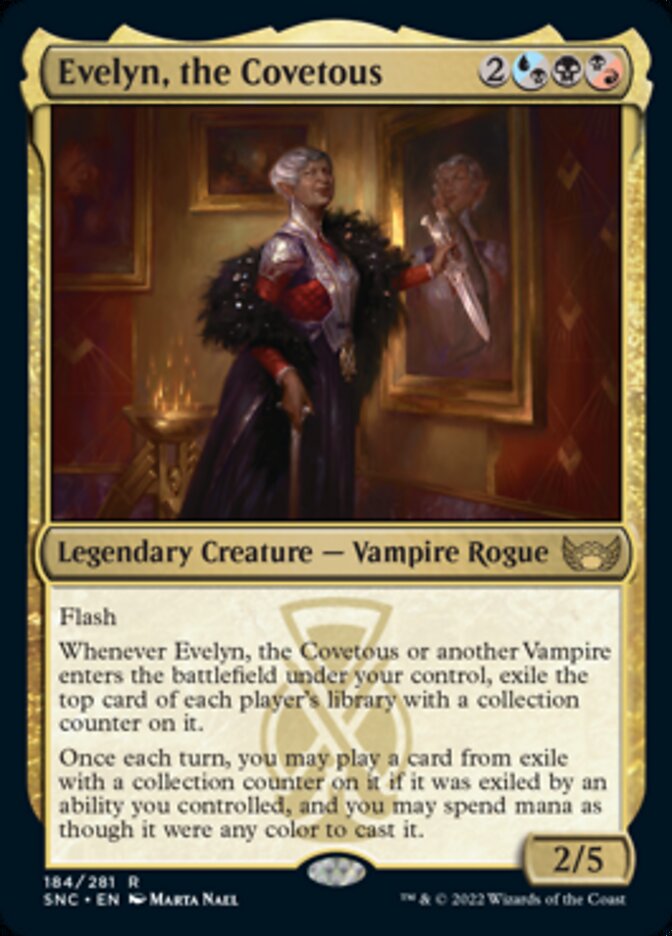
Evelyn, the Covetous is a rogue but the vampire typal text is the main attraction. That’s not to say the card’s worthless without other vampires; it’s still a slow 5-for-1 over time, and that’s only if you cast it once.
#37. Cephalid Facetaker
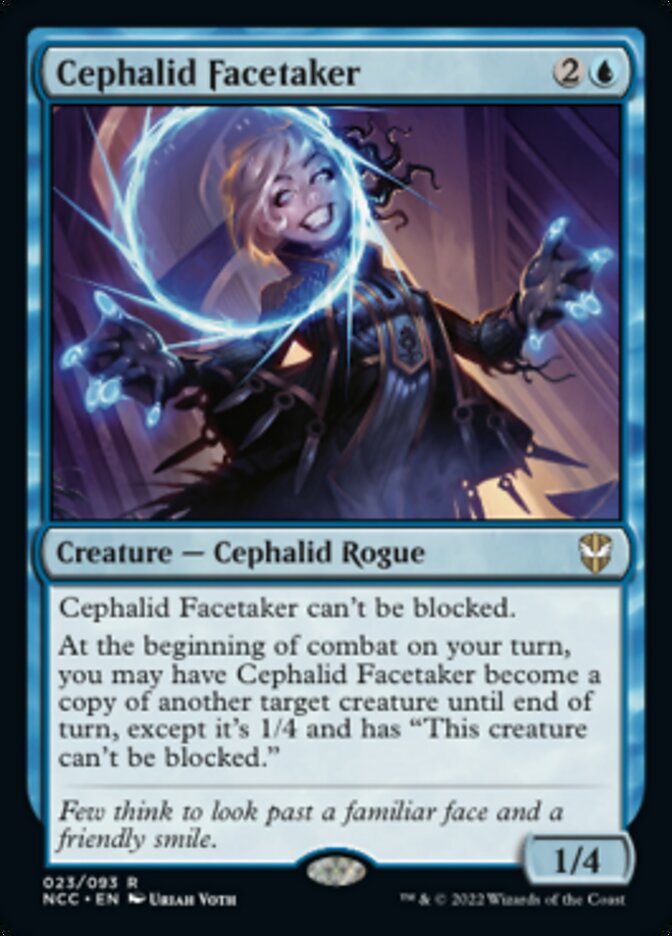
Not my face! Anything but the money-maker! Say, what happens if Cephalid Facetaker tries to copy Faceless One? Anyway, it’s cool take on Clone. It misses ETB triggers, but it’s cheaper than the traditional 4-mana clones. Having unblockable makes it ideal for copying creatures with attack triggers.
#36. Missy
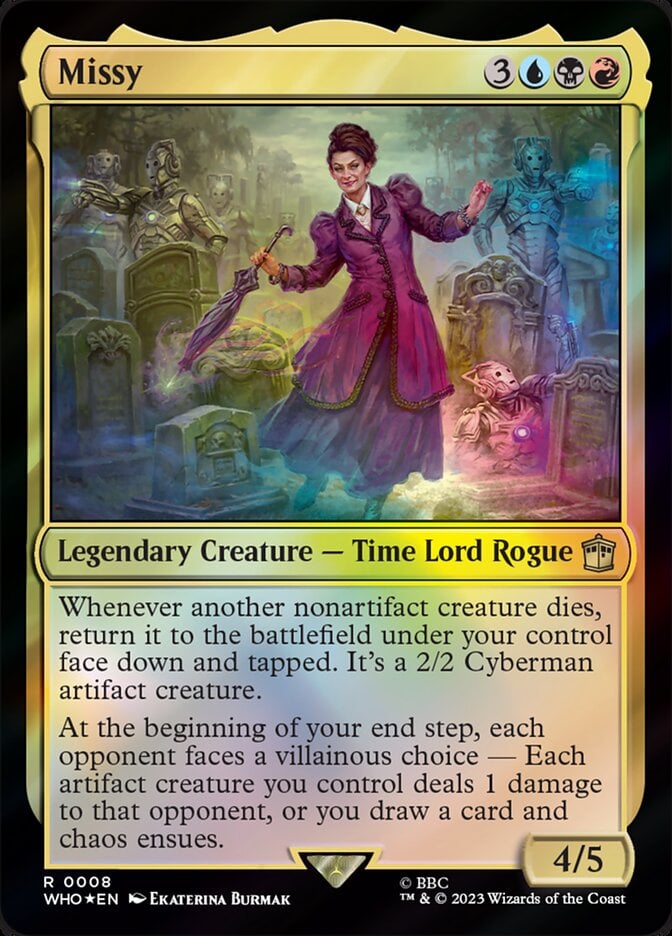
Elliott? No, just Missy? Ok then.
Combo potential with Ruthless Ripper aside, Missy’s impressive as a card that makes a 2/2 whenever a creature dies. Even better if they’re cards that can be turned face up, though that’s not necessary. The villainous choice is usually win-win regardless of how your opponents vote, and I guess it does more stuff if you’re playing Planechase?
#35. Edric, Spymaster of Trest
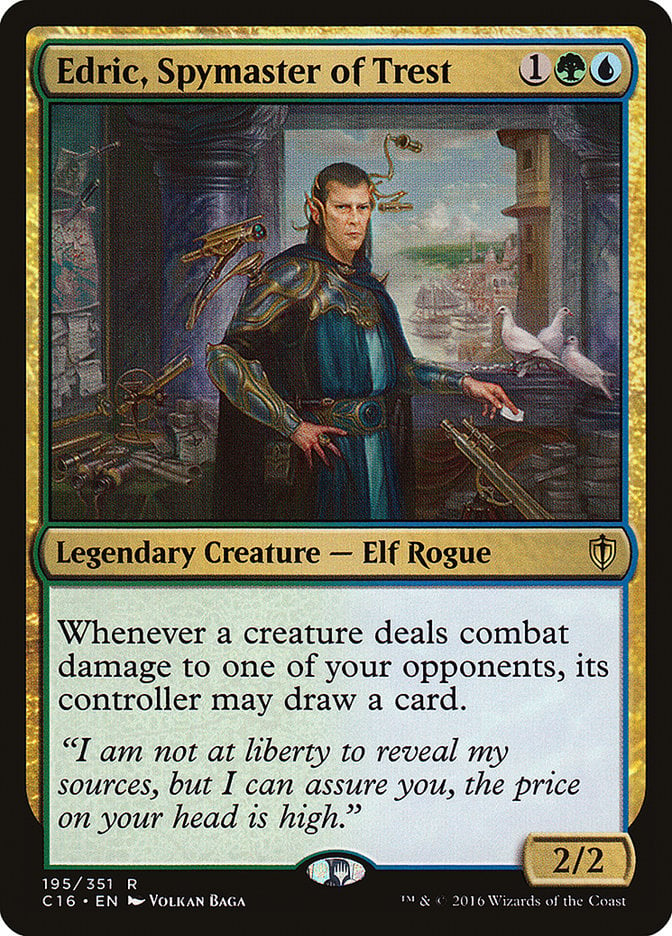
Edric, Spymaster of Trest does group hug right. It rewards the entire table while giving you the greatest benefit (deterrence from attacks). You can be much more sinister though, combining Flying Men variants with extra turn spells to hoard all the extra draws for yourself.
#34. Ghostly Pilferer
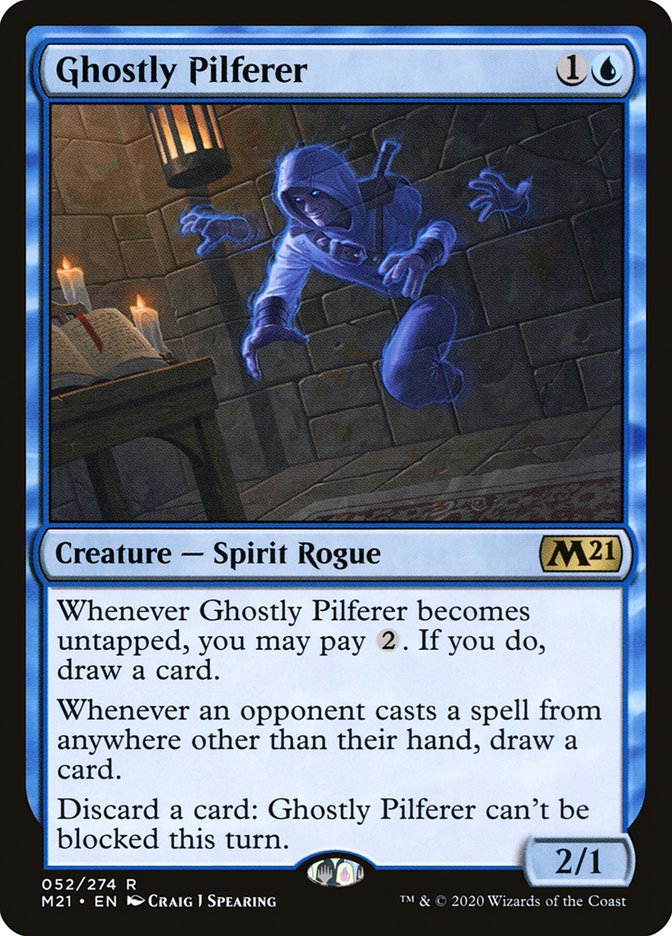
Here’s an underrated gem for y’all. Ghostly Pilferer’s fine as a card filtering engine, but the real kicker is the middle ability. So many spells get cast from zones other than the hand, with entire archetypes focused on doing so. Having Pilferer in play usually nets you a hefty amount of card draw.
#33. Yisan, Wanderer Bard
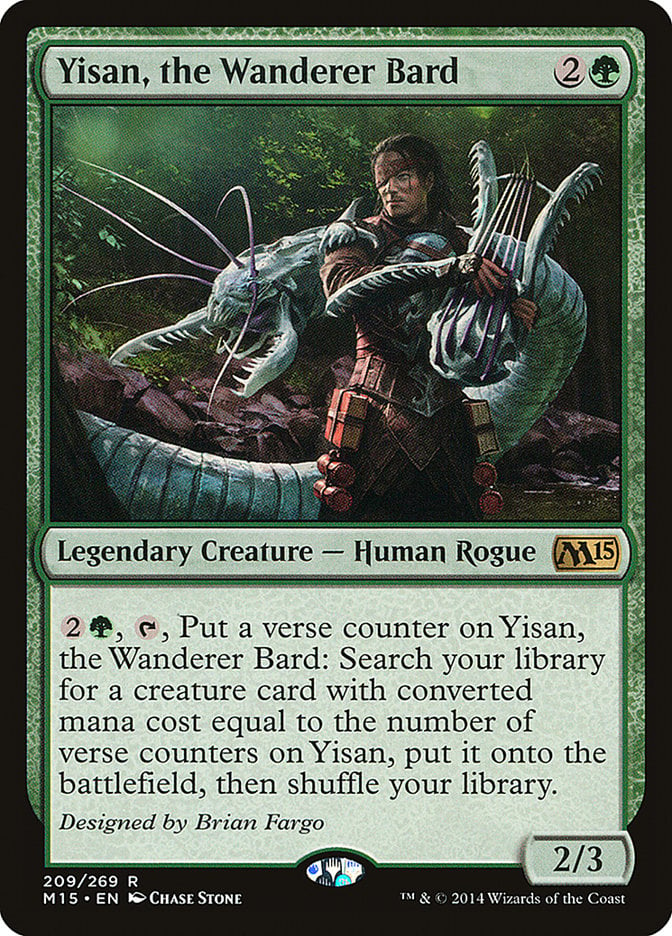
I don’t hear people talk about Yisan, the Wanderer Bard anymore. Whether that’s because it’s no longer effective or people just found new toys to play with, Yisan’s always been a scary creature. Repeatable tutors always pull their weight, and Yisan gets explosive with untap effects. Funnily enough, the bard creature type was added to Yisan, but rogue wasn’t removed.
#32. Alora, Merry Thief
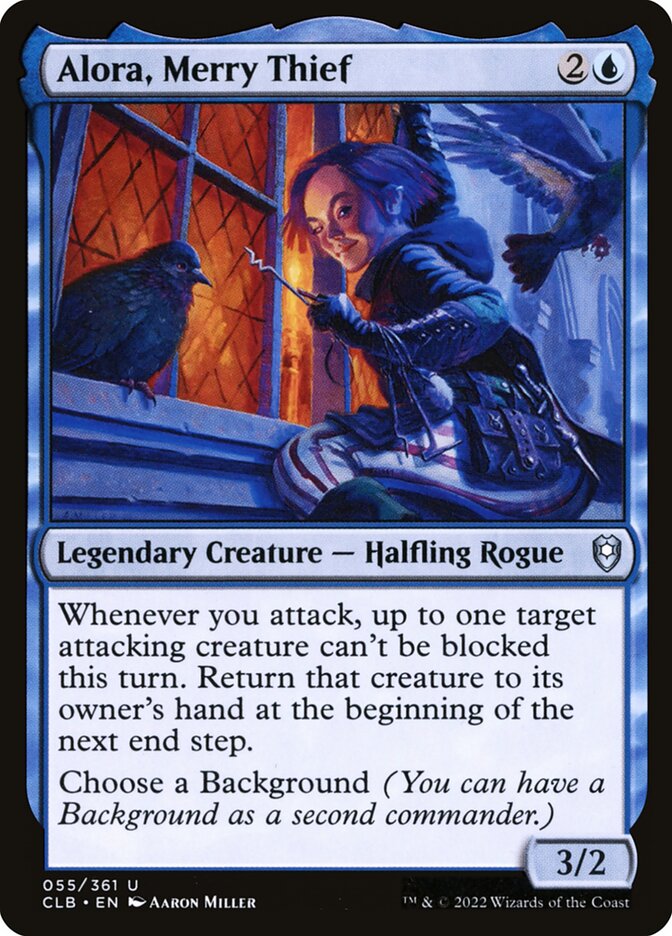
Alora, Merry Thief marks off all the usual rogue boxes. Some sort of unblockable text? Check. Thief in the name? Check. Possibly a background as an Agent of the Shadow Thieves? It all checks out; hide your purse around this one.
#31. Forge, Neverwinter Charlatan

The sheer amount of Treasure support in Commander makes it easy for Forge, Neverwinter Charlatan to come down with a ridiculous statline like a 12/4 or whatever. A menacing 12/4. A menacing 12/4 with ward that makes it a 14/4 if someone pays the ward cost. No big deal.
#30. True-Name Nemesis

True-Name Nemesis was one of the first cards to demonstrate how a Commander-specific design could impact Constructed formats. It’s past its heyday and was never all that oppressive in Commander. Still, you don’t want to be the player named by Ol’ Nemesis here.
#29. Nighthawk Scavenger
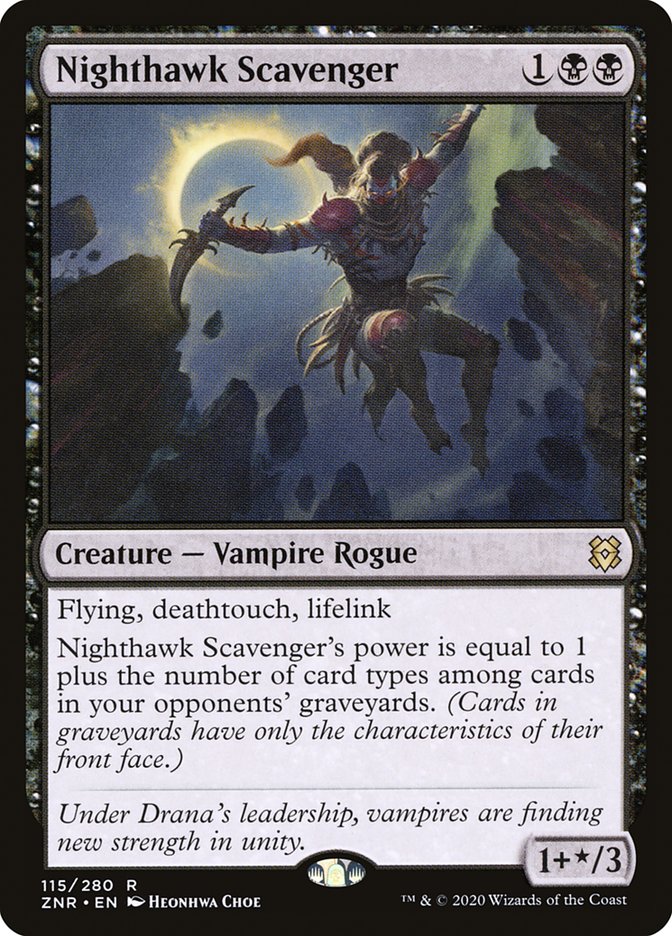
It takes a lot for a beatstick with only keywords to stick out on a list like this, but Nighthawk Scavenger has the right numbers. It’s not uncommon for this to be a 6/3 lifelinking flyer or bigger. And if an opponent’s running kindred spells or battles, hoo boy!
#28. Cold-Eyed Selkie
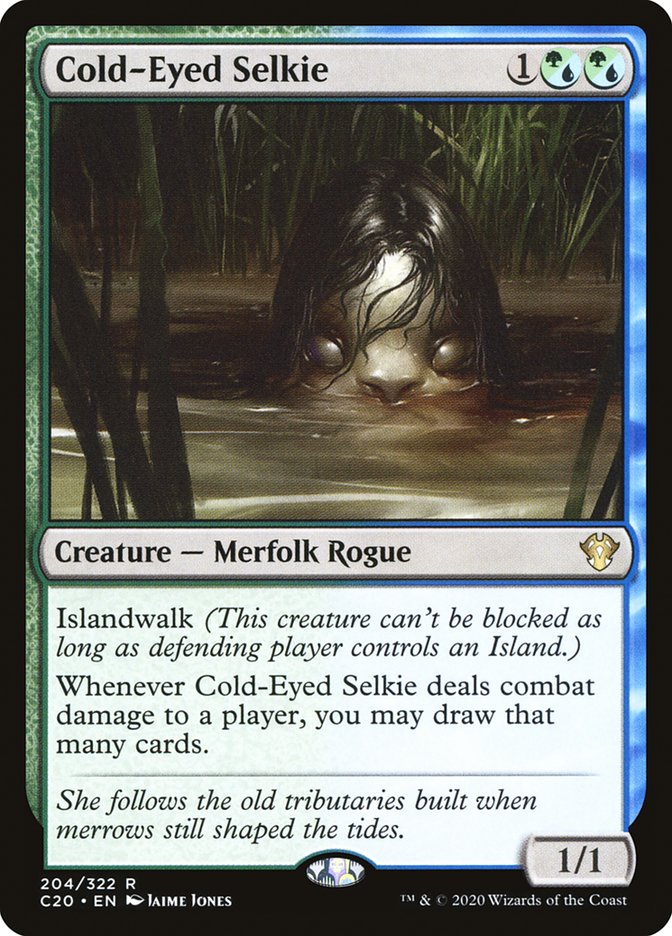
Cold-Eyed Selkie‘s made rounds in EDH since the dawn of the format, punishing anyone foolish enough to play islands in their deck (you’re not getting out of this one easy, Hallowed Fountain). You don’t lose anything, but you give the Selkie player an easy avenue for drawing extra cards every turn.
#27. Varragoth, Bloodsky Sire
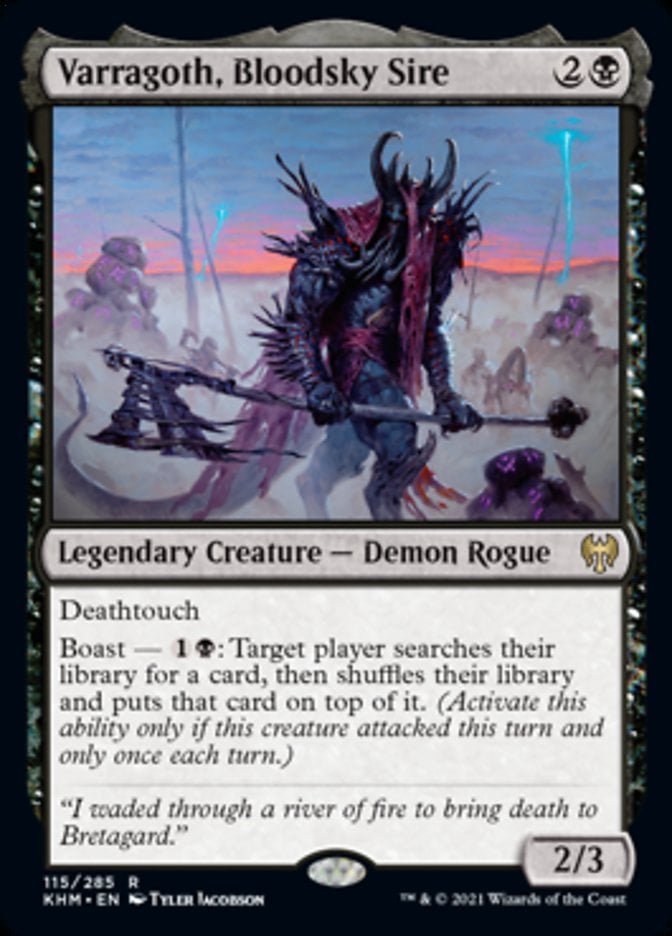
My favorite edge on Varragoth, Bloodsky Sire is that the boast ability can target other players if you’re feeling generous. Otherwise, you’re targeting yourself for a free Vampiric Tutor every turn. Without the life loss. Sounds nice, eh?
#26. Blighted Agent

Trigger warning: infect.
A turn-2 Blighted Agent signals that you need to kill the opponent who played it, or you will die out of nowhere. Don’t be fooled by the 1/1 body; people running Blighted Agent usually pack other poison cards, +1/+1 counters, or big pump spells to try and one-shot players.
#25. Laurine, the Diversion + Kamber, the Plunderer
Look at that, a partner pair of rogues! Kamber, the Plunderer passively gains life and creates Blood tokens, while Laurine, the Diversion provides a sac outlet and goads opponents’ creatures into combat. “Diversion” is no joke either; a 3/3 first striker plays offense and defense well.
#24. Dogged Detective

Thanks to some stubbornness on WotC’s behalf, Dogged Detective remains a non-detective rogue, despite the introduction of the creature type in Doctor Who and Murders at Karlov Manor. Not that it matters, since you’re trying to discard, sacrifice or chump block with this card as much as possible, picking it back up with ease whenever an opponent draws two cards.
#23. Whirler Rogue

Whirler Rogue’s a quintessential casual Commander card. If you’ve cultivated an environment where Whirler Rogue shines, you’re in for some awesome, interactive gameplay. Three bodies for 4 mana is decent, especially since the Rogue makes a great blink target and the tokens are evasive artifact creatures. This card fits so many different niches, and the activated ability sometimes ends games.
#22. Prowling Geistcatcher
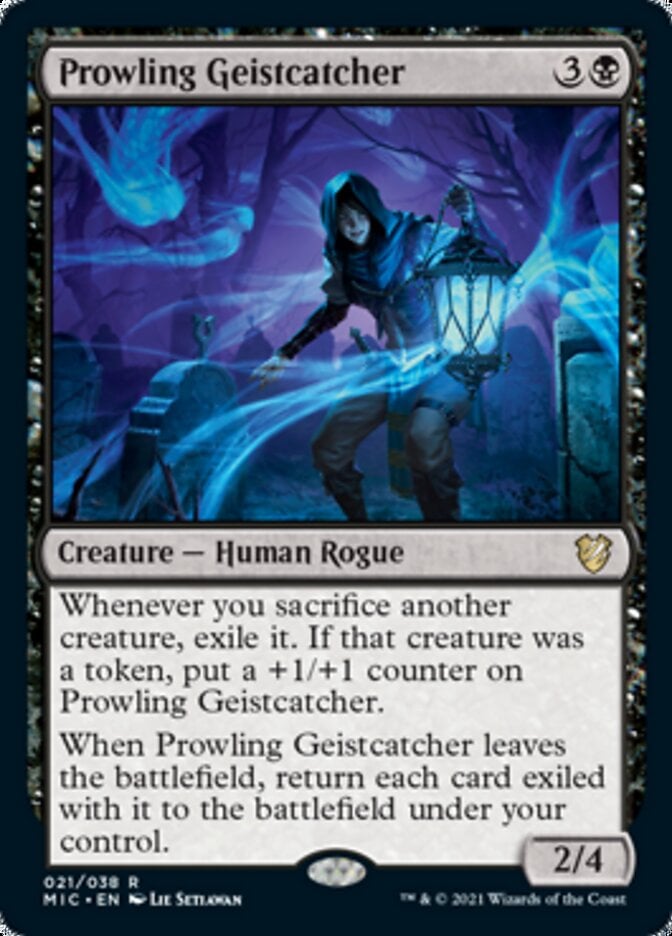
Think about Prowling Geistcatcher as a second graveyard. If you regularly sacrifice creatures, the Geistcatcher stows them away in exile where they’re safe from graveyard hate, then pops them all back into play when it leaves the battlefield. Note that this only triggers on sacrifice effects, not when a creature you control dies.
#21. Glasspool Mimic / Glasspool Shore
One of the best MDFCs for Commander, Glasspool Mimic is Mirror Image with two upsides: It can be played as Glasspool Shore, and it becomes a rogue. That second part won’t matter much, since you either don’t care that it’s a rogue, or you're copying a creature that’s already a rogue.
#20. Lotho, Corrupt Shirriff

Lotho, Corrupt Shirriff plays quite well despite the almost-identical Monologue Tax feeling like a dud most of the time. That just goes to show how much of a difference a single mana can make. Lotho is particularly powerful as a commander since it hits the board right before the big double-spell turns.
#19. Brazen Borrower
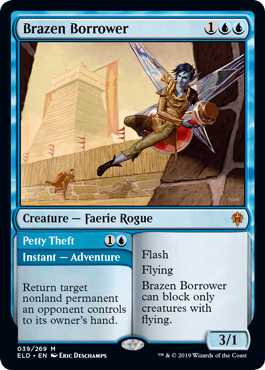
Petty Theft is a weak card. The creature half of Brazen Borrower’s equally shrug-worthy. Combining those on the same card somehow makes it excellent? Brazey B perfectly demonstrates the power of adventures, and why Throne of Eldraine marks a turning point in the overall power level of Magic card design.
#18. Gonti, Lord of Luxury
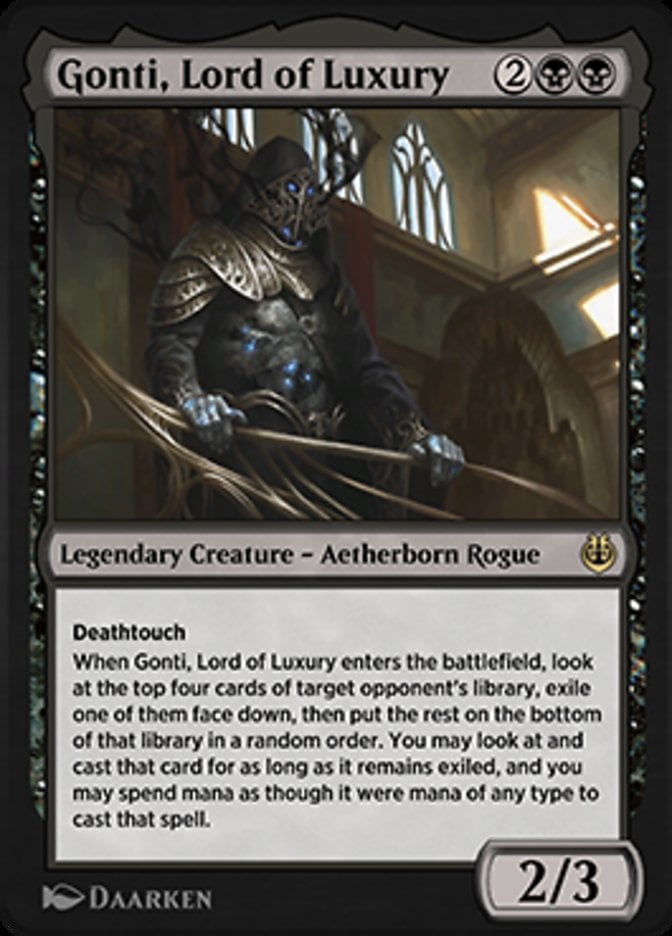
Gonti, Lord of Luxury is such a sweet card. It introduced us to the modernized template for theft cards, leading many players to refer t this kind of effect as the “Gonti ability.” Deathtouch also matters quite a bit. It’s just a masterclass in fun card design.
#17. Zareth San, the Trickster
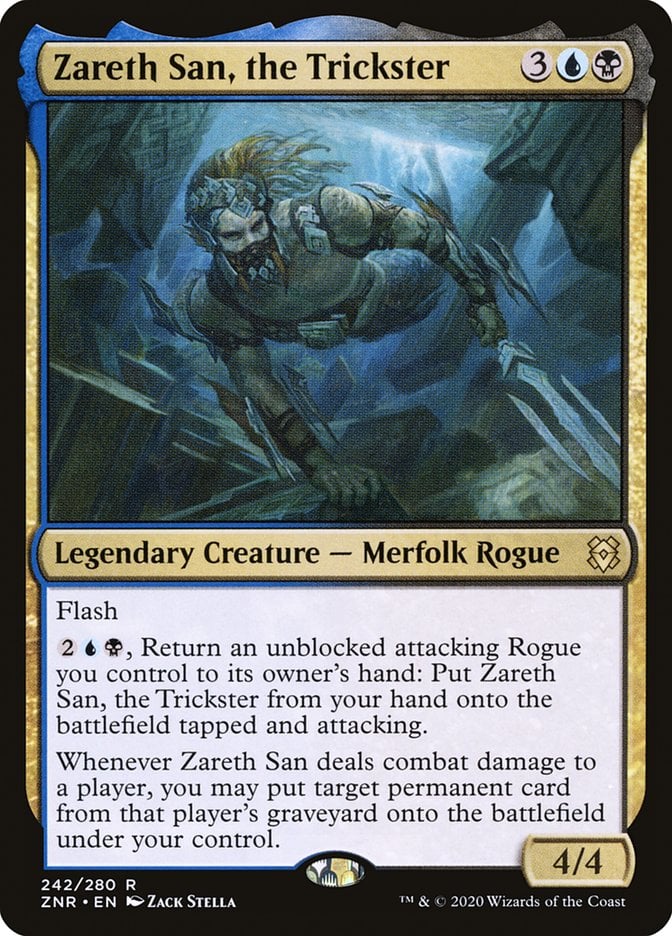
Zareth San, the Trickster’s one of the first cards you slot into any rogue typal deck. The combination of “rogue ninjutsu” and a devastating combat damage triggers makes this one of EDH’s best rogues-matter payoffs. The card’s generically powerful enough that you’ll see it in decks with enough evasive creatures to get a crack at some free permanents.
#16. Tinybones, Trinket Thief
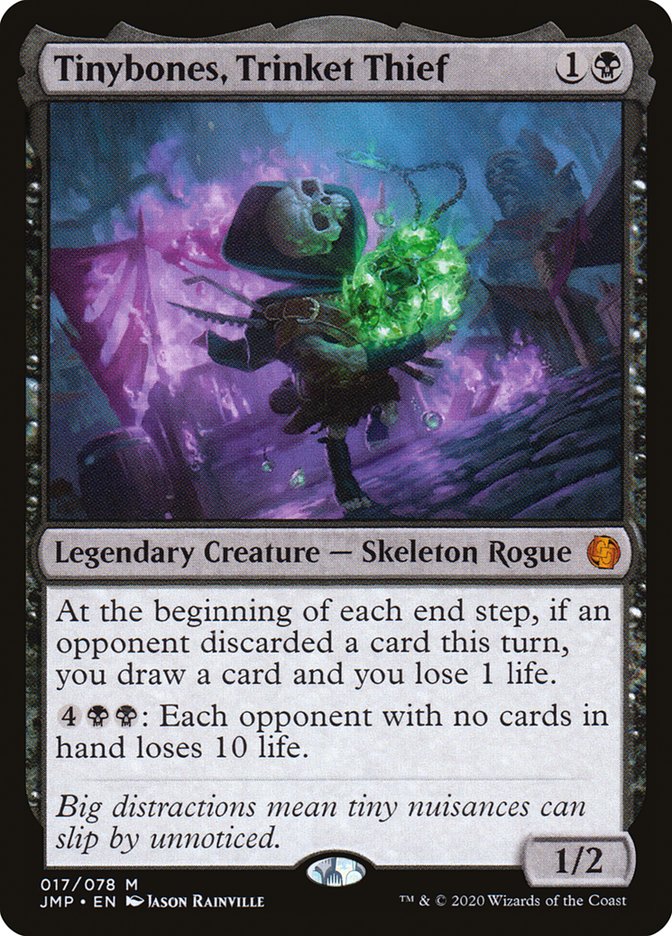
Say it with me: Your Tinybones, Trinket Thief opponent is not your friend. They’re not interested in letting you hold cards and play the game. They want you empty-handed as soon as possible, so expect some heinous discard spells like Mind Twist and Dark Deal coming your way.
#15. Zulaport Cutthroat
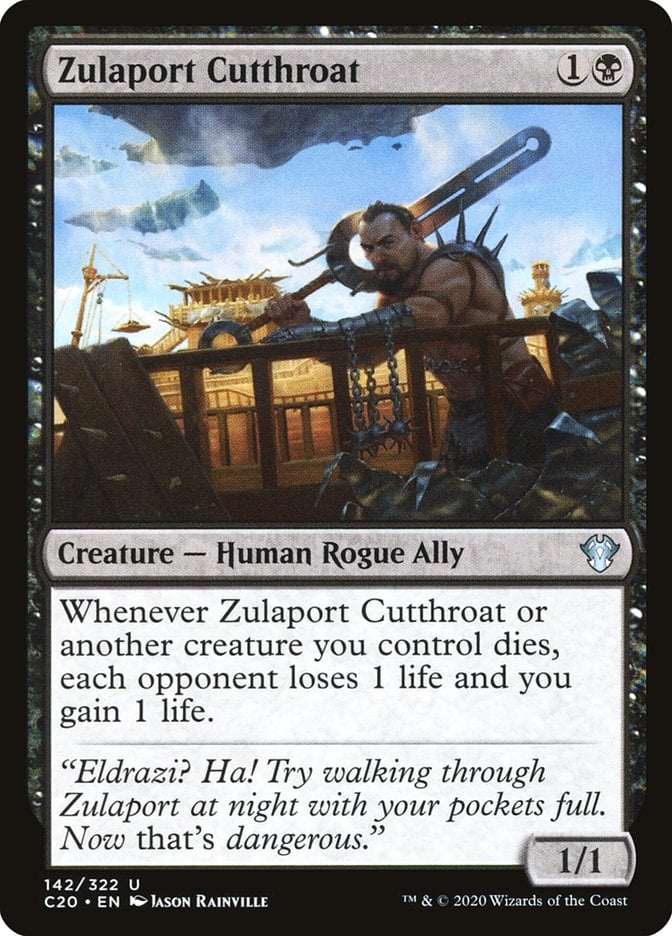
Debate all you want about which one’s better between Zulaport Cutthroat and Blood Artist, you’re putting them in the same deck anyway. The creature types rarely matter in the comparison, it’s really whether you want to ping all your opponents for each creature you lose, or if you want your pings to include opponents’ creatures too.
#14. Sakashima of a Thousand Faces
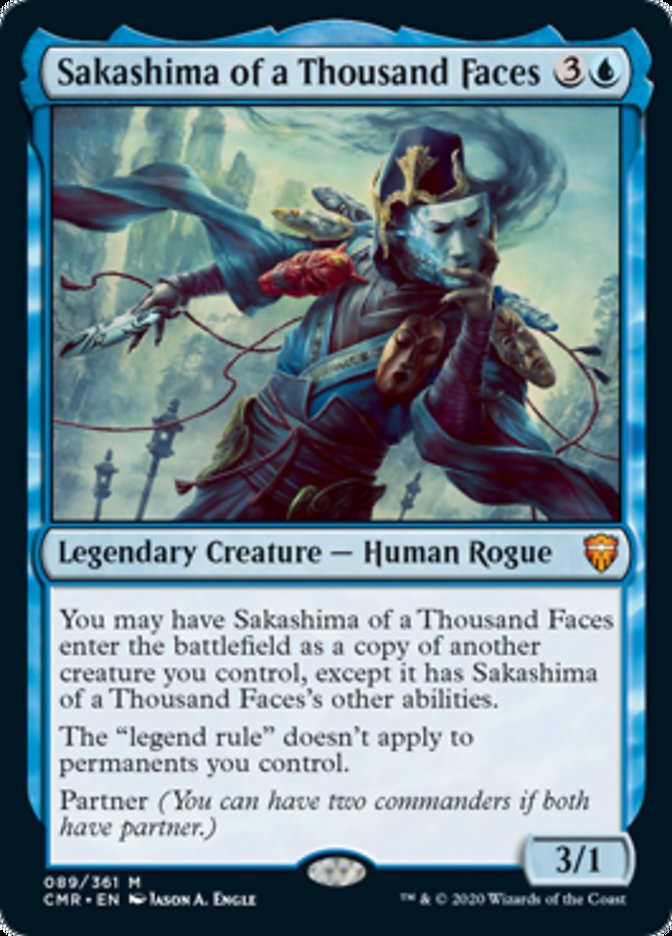
Sakashima of a Thousand Faces is the perfect legend for anyone who’s ever thought to themselves: “What if I could have two of the same commander?” Well you can! Provided one’s Sakashima and the other’s a partner creature. That means Sakashima’s rarely ever a rogue on the battlefield since there are no other generic rogue partners.
#13. Ivy, Gleeful Spellthief

I’ve seen Ivy, Gleeful Spellthief enough to know how quickly the commander gets carried away. Don’t let them talk you out of it: Kill this faerie rogue on sight when you have the chance, or it’ll be backed up by way too many layers of protection to handle. It’s also a natural foil to entire decks. Oh, you’re playing Feather, the Redeemed? I’ll just copy all your spells for free.
#12. Morbid Opportunist
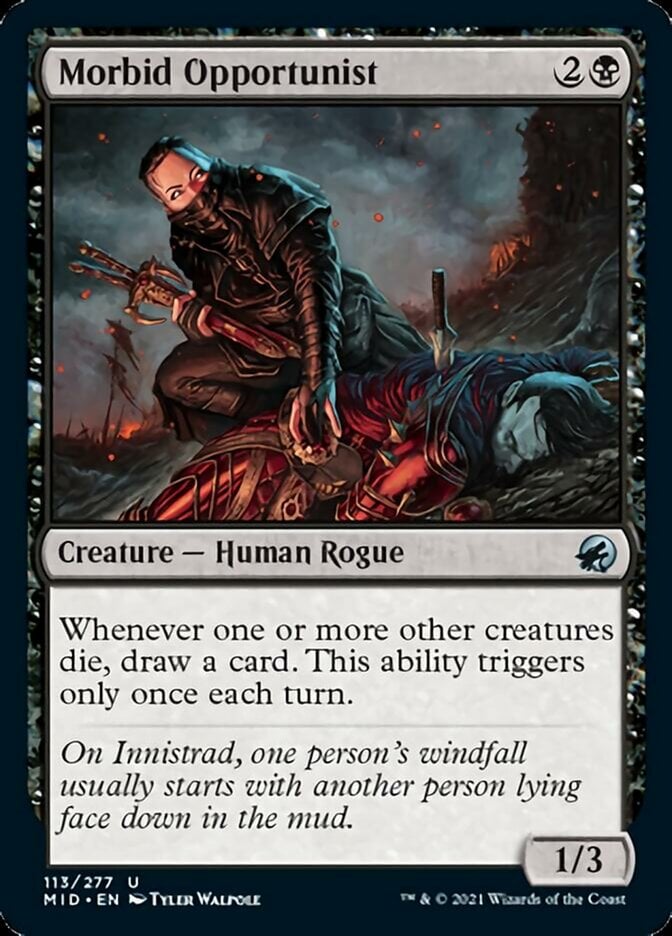
Gotta love another simple uncommon sneaking its way onto the list. Morbid Opportunist taught me the “triggers once per turn” text is actually good card design. Opportunist would be incredibly broken without it, and it’s already capable of drawing up to four cards per turn cycle.
#11. Burakos, Party Leader

Isn’t every party worth having in need of a good rogue? Burakos, Party Leader might be just the one your party’s missing! It brings some Treasure, you lose some life. You know, the usual. If that doesn’t sound better than the average office pizza party I don’t know what does.
#10. Nalia de’Arnise

I guess I’ll toss the other party legend up here too. Whereas Burakos, Party Leader generates tons of mana for a party deck, Nalia de'Arnise functionally draws tons of cards and pumps your board each turn. It’s not hard to maintain a full party in Commander, whether you’re cheesing it with changelings or doing it the honest way with one of each party creature type.
#9. Anowon, the Ruin Thief
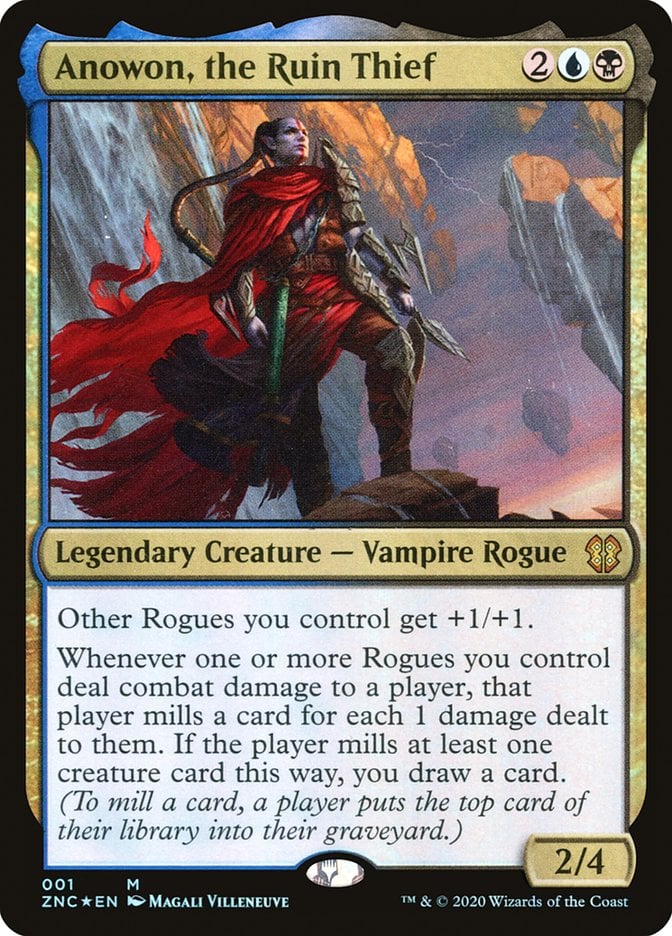
Somewhere in the transition from Anowon, the Ruin Sage to Anowon, the Ruin Thief, Anny here stopped caring about vampires and adopted the rogue’s life. This is the premier rogues-matter commander, and one of the most popular commanders in the format. People love their typal decks, y’all.
#8. Notion Thief
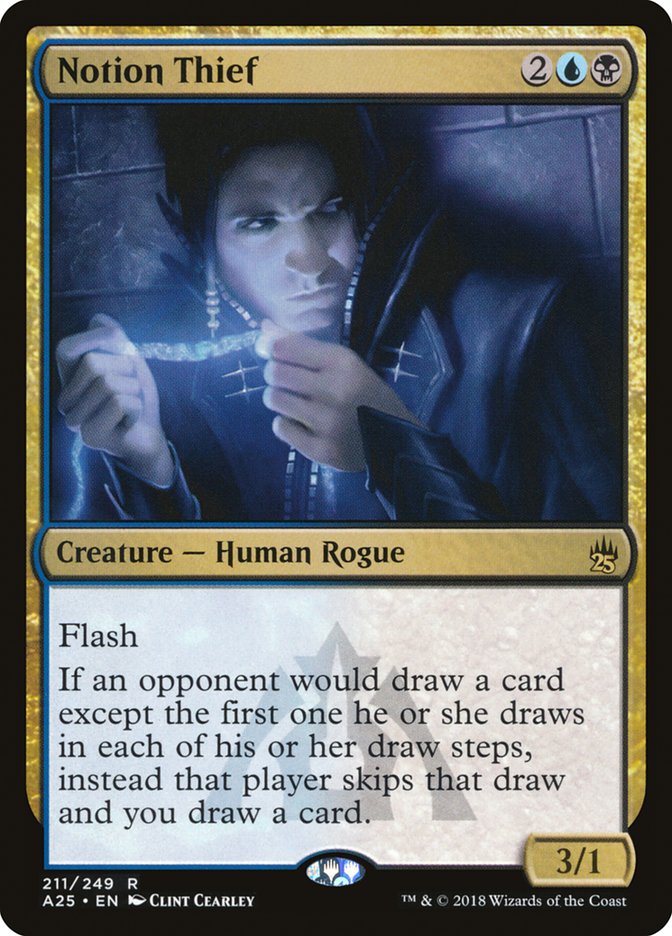
The concept of an operative that can steal your very thoughts and secrets is a bit disconcerting. But the joke’s on them: All I ever think about is food. Notion Thief steals much more than the thought of a good meal in Commander, where it regularly pinches peoples’ card draw, and sometimes combos with wheel effects to make everyone really, really hate you.
#7. Henzie “Toolbox” Torre
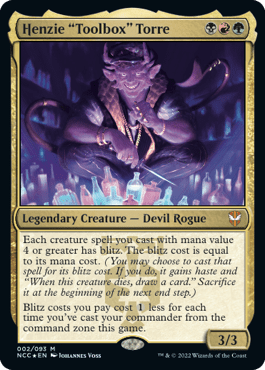
There are apparently some pretty passionate Henzie “Toolbox” Torre players out there, so I’m slotting this pretty high to preemptively appease the masses. It’s obviously a super powerful commander, as is any card that lets you cheat in giant monsters on the cheap.
#6. Tivit, Seller of Secrets
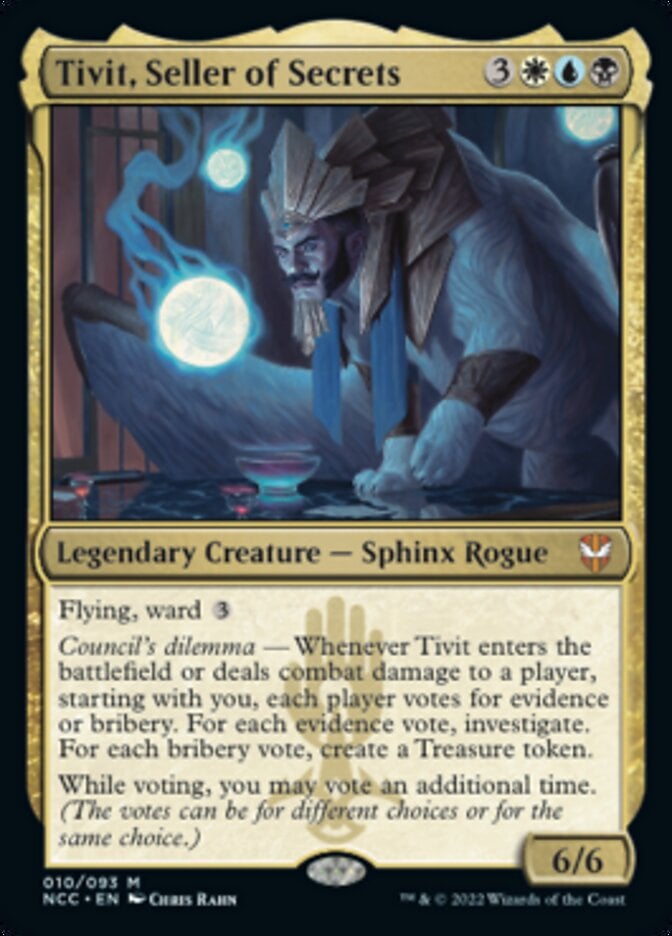
Tivit, Seller of Secrets is in the exact same camp as Henzie “Toolbox” Torre: I know it’s an excellent cEDH card, but my knowledge and experience with that side of EDH is lacking. It’s still an absolute nuisance in casual Commander, usually paired with Time Sieve for infinite turns. Even a “fair” Tivit generates enough material to make the voting split not really matter.
#5. Agent of Treachery

The Mind Flayer/Sower of Temptation variants don’t pan out well in Commander, but Agent of Treachery has a few pivotal differences: It can steal any permanent, and your opponent doesn’t get it back when Agent leaves play. That’s absolute nonsense with blink effects or ways to cheat it into play. Not to mention theft decks are often able to turn on the 3-stolen-permanents trigger. Why not get a free Ancestral Recall for taking my opponents’ stuff?
#4. Grim Hireling

Grim Hireling’s an absolute house. Not a Beverly Hills mansion, but a sturdy upper-class 2-story with a balcony, to be sure. Drop this and make two Treasure tokens for each opponent you connect with in combat. That’s up to six Treasures each combat, which pays for the Hireling and then some. That’s an absurd amount of ramp from a 4-drop, and the Treasure can pick off creatures too.
#3. Opposition Agent
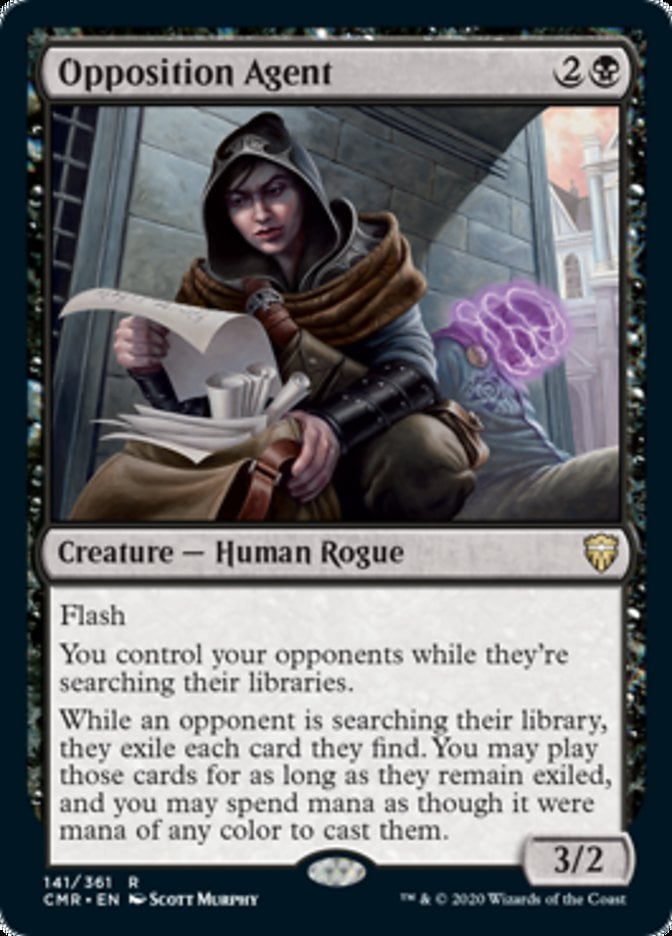
Opposition Agent didn’t break the format the way people predicted it would, but man it sucks when someone flashes it into play in response to your fetch land or Cultivate. What was meant to be a check for rampant tutoring turned out to be a universal hoser for any search effect, no matter how small.
Unfriendly mandatory PSA: You can look at your opponent’s hand while controlling them with Opposition Agent.
#2. Thieving Skydiver
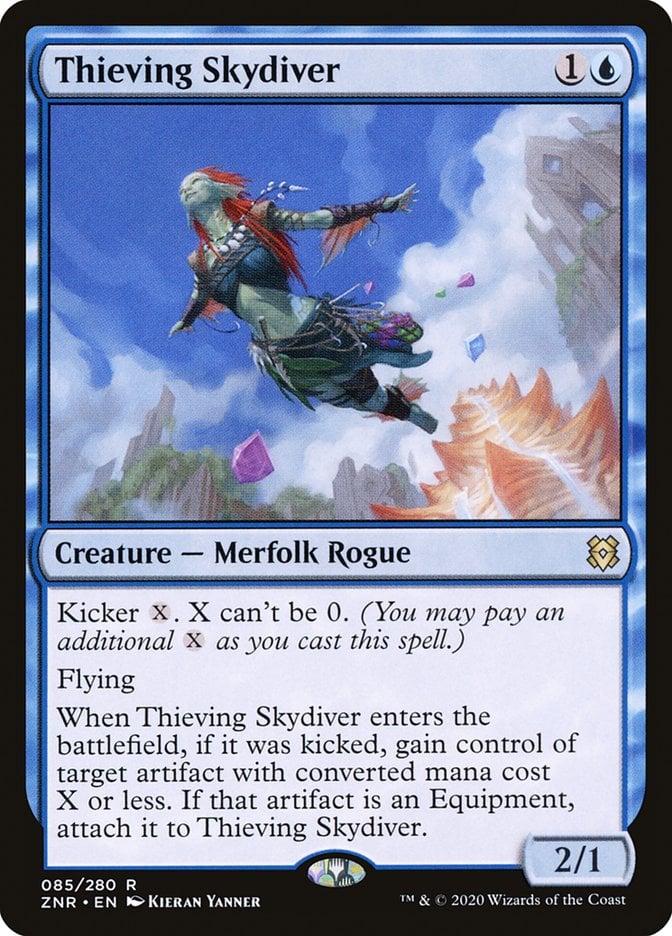
It feels like Thieving Skydiver’s finally getting the love it deserves. It’s a phenomenal way to take a player off a fast start from mana rocks, and it yoinks engine artifacts in the late-game. Let’s not get started on how it works against the Voltron equipment player.
#1. Dauthi Voidwalker
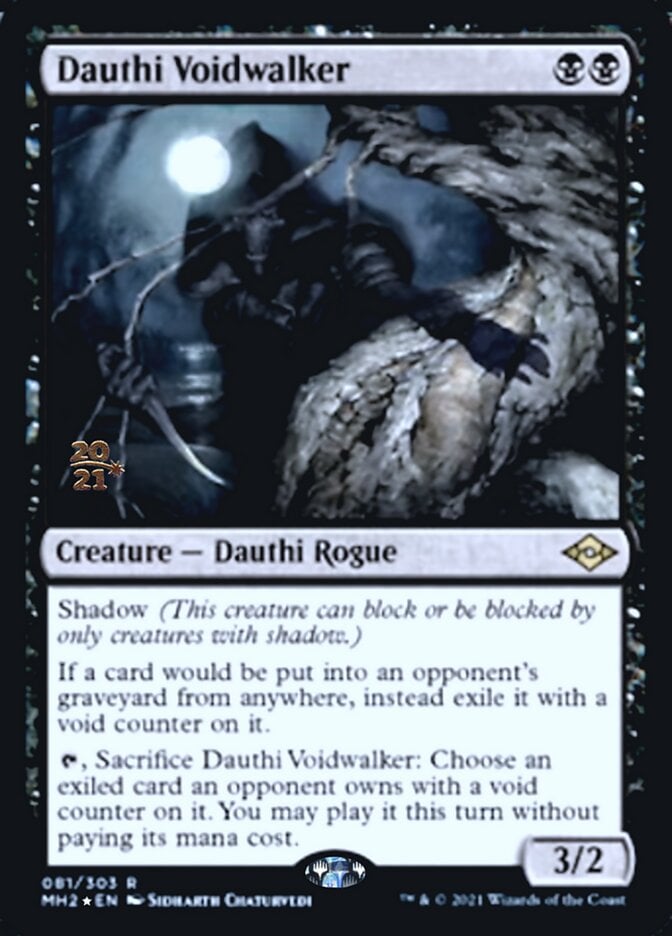
I’m conflicted about Dauthi Voidwalker. On one hand, I find it disrespectful to the game designers to call a card design “lazy,” but at the same time I can’t fathom what kind of design process led to the printing of Voidwalker as-is. Double-pips and shadow as downsides don’t come even remotely close to the massive upsides of a 2-drop that hoses opponents’ graveyards and tags out for a free game-winning spell. And shadow’s actually upside more often than not! This is one of my least favorite designs of all time, and goes to show how powerful that Modern Horizons 2 symbol can be.
Best Rogue Payoffs
Your level-1 rogue payoffs are cards that explicitly reward you for playing rogue creatures. This can be anything from Soaring Thought-Thief to Mari, the Killing Quill. Silver-Fur Master and Prosperous Thief were designed as ninja payoffs, but work with rogues, too.
Mill strategies coexist with rogues-matter decks quite easily, thanks to the overlap presented by Anowon, the Ruin Thief. Cards like Thieves' Guild Enforcer and Zareth San, the Trickster play around in this space as well, making good use of milled cards while being rogues for Anowon and your other payoffs.
Rogues often have evasive ability, making them perfect targets for Curiosity-style effects. Whether it’s a literal aura, or you go wide with evasive rogues and Reconnaissance Mission, you should be able to slip past blockers for a few easy hits each turn.
And of course, there ain’t no party like an MTG party. Rogue is one of the four key party types, aside from cleric, wizard and warrior. It helps that the main party commanders, Nalia de'Arnise and Burakos, Party Leader are both rogues, but a deck lead by either of these still want a healthy number of additional rogues present in the 99/98.
Wrap Up
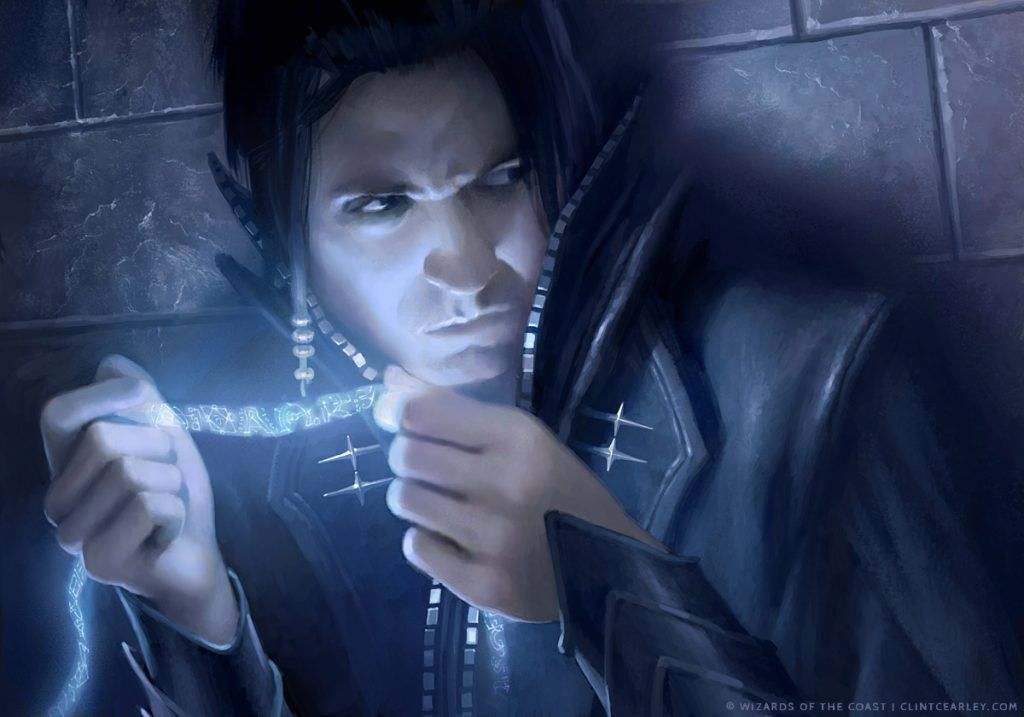
Notion Thief (Dragon's Maze) | Illustration by Clint Cearley
It’s a shame to go through the trouble of writing an entire list of rogues and never once mention X-Men, but I guess it’s just not that type of list. A ranking of MTG rogues will have to suffice for today. But that’s enough trekking through these seedy streets of robbers and undercover informants. My pockets already feel lighter than they should.
Rogues are a slippery bunch of rascals. So slippery that I’m sure one or two of the best rogues snuck past without me noticing. If you happened to catch sight of them, or you can think of any other notorious rogues worth mentioning, let me know in the comments below or over in the Draftsim Discord.
Thank you for making Draftsim your #1 stop for all things Magic!
Follow Draftsim for awesome articles and set updates:
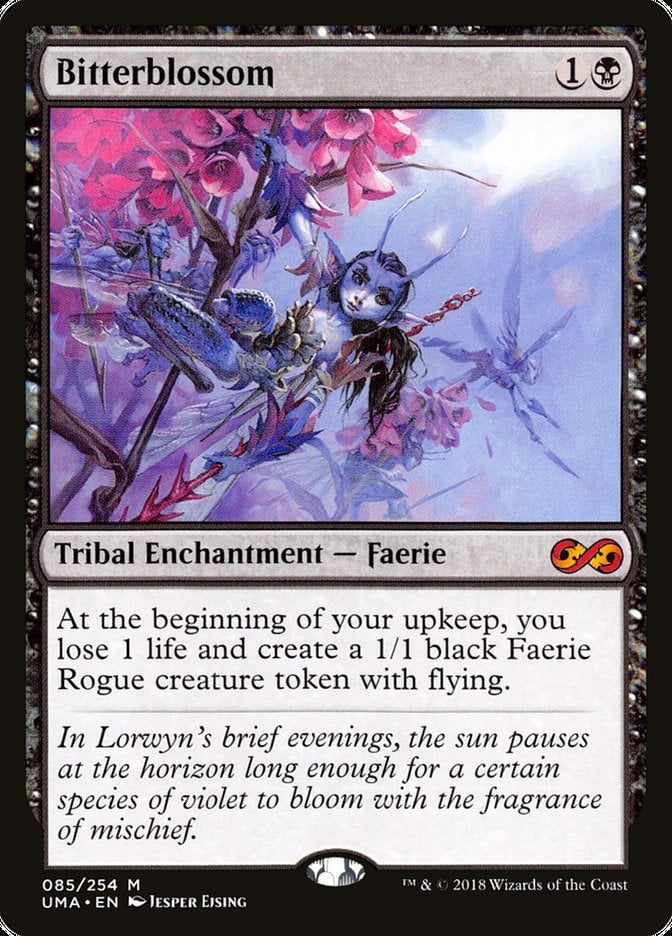

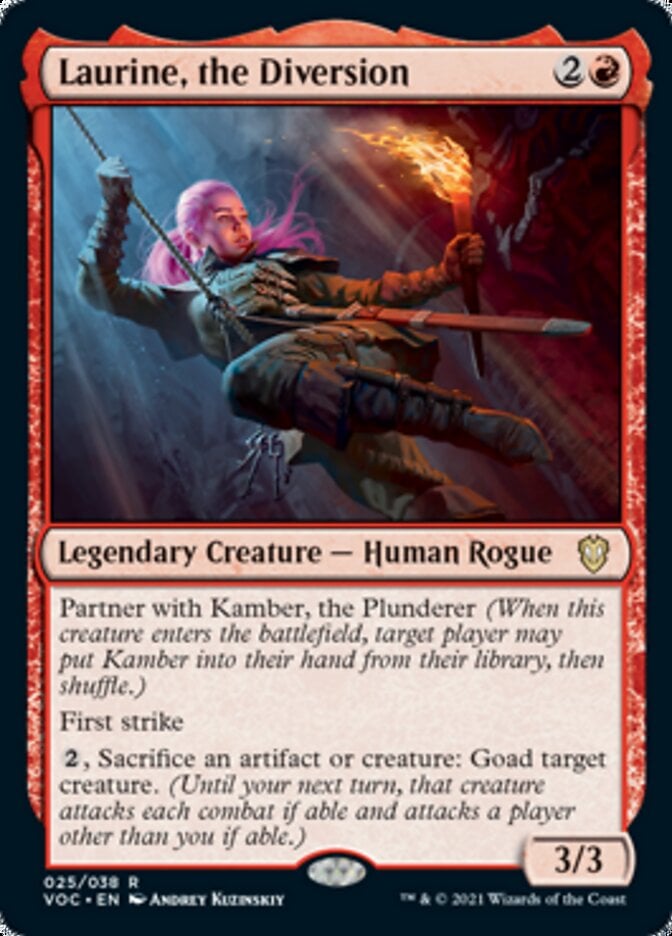



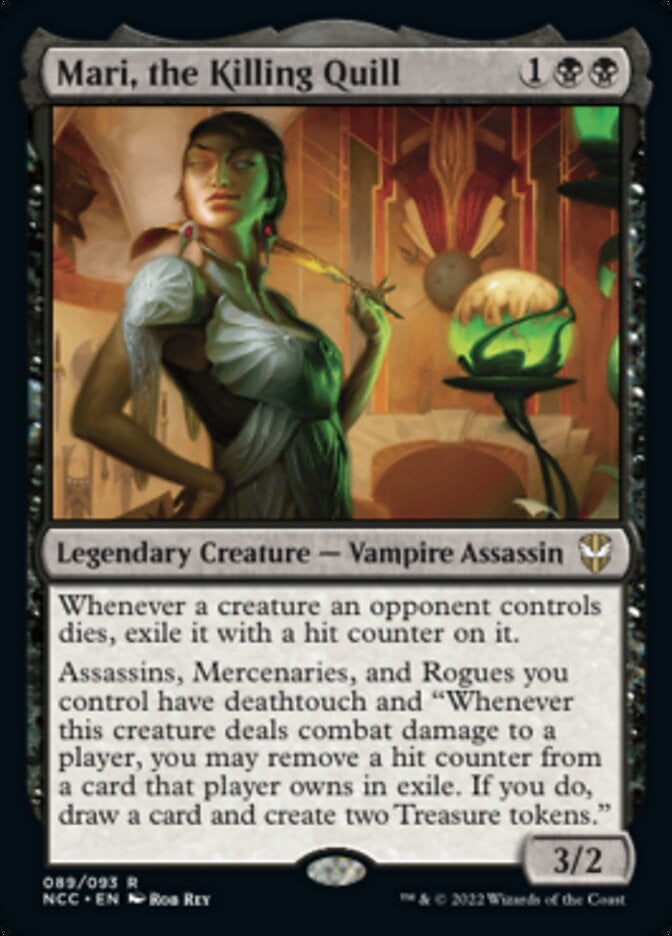
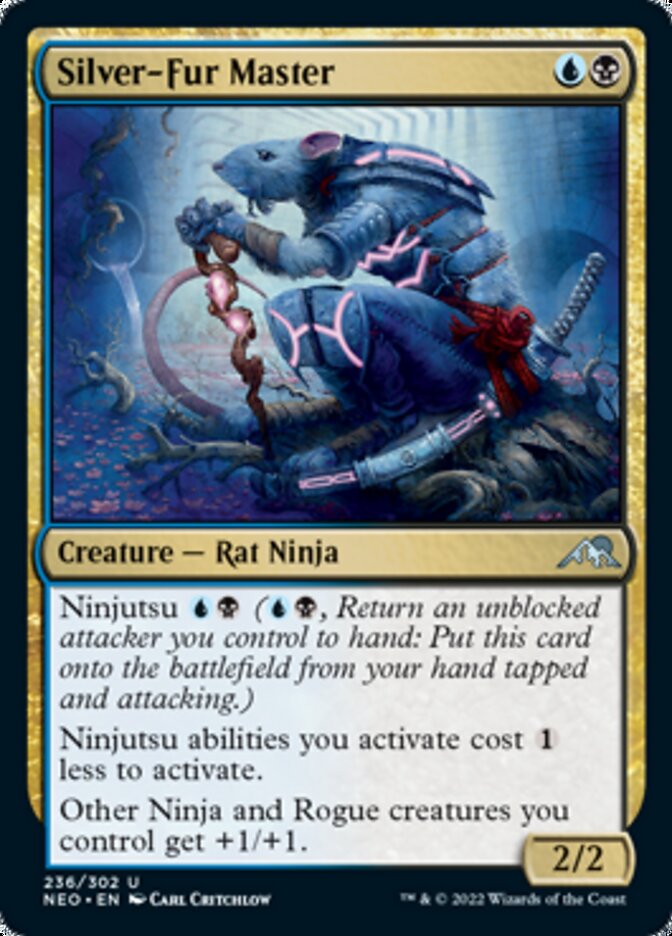
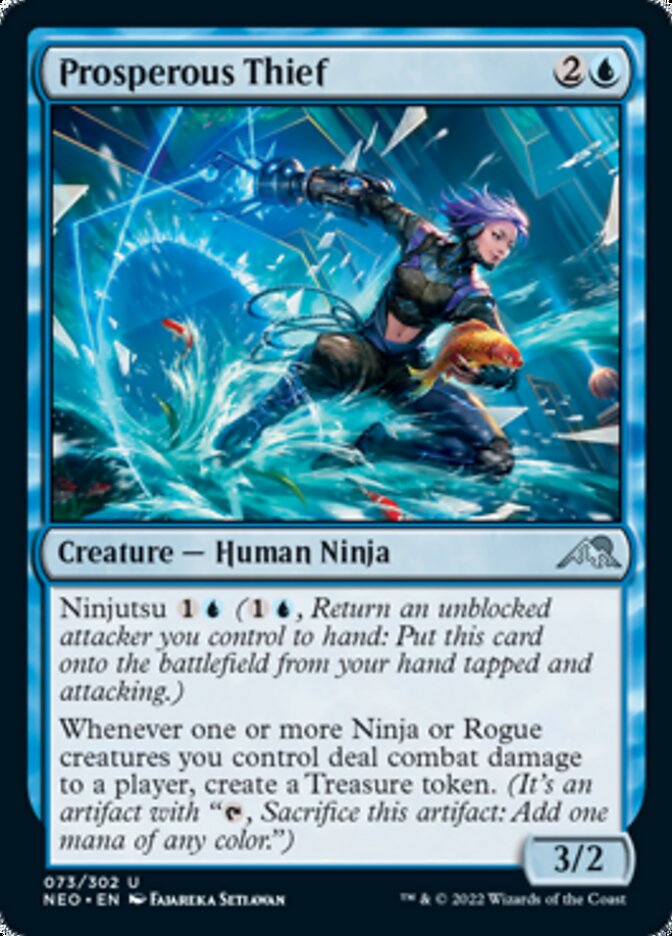
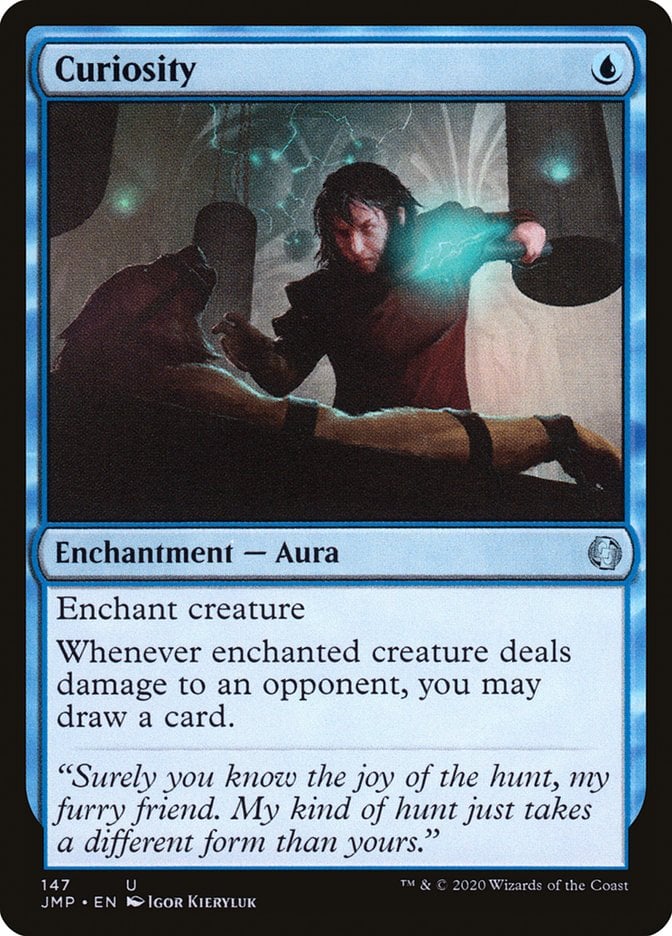
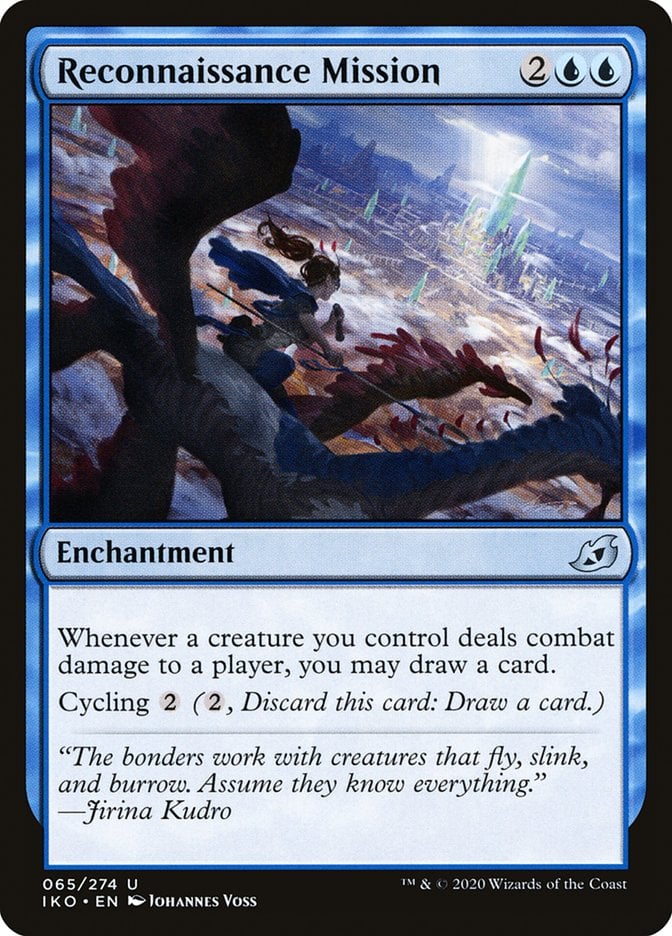
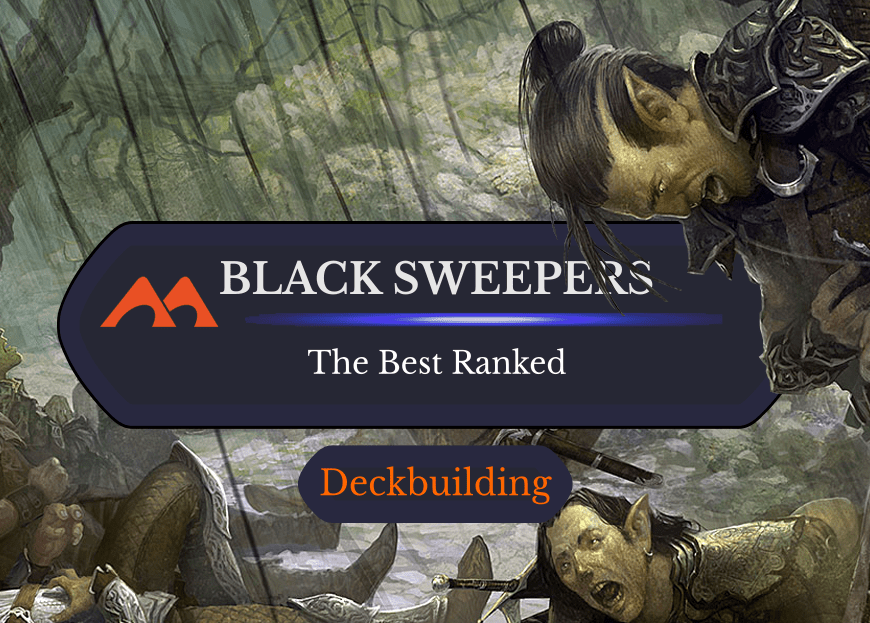
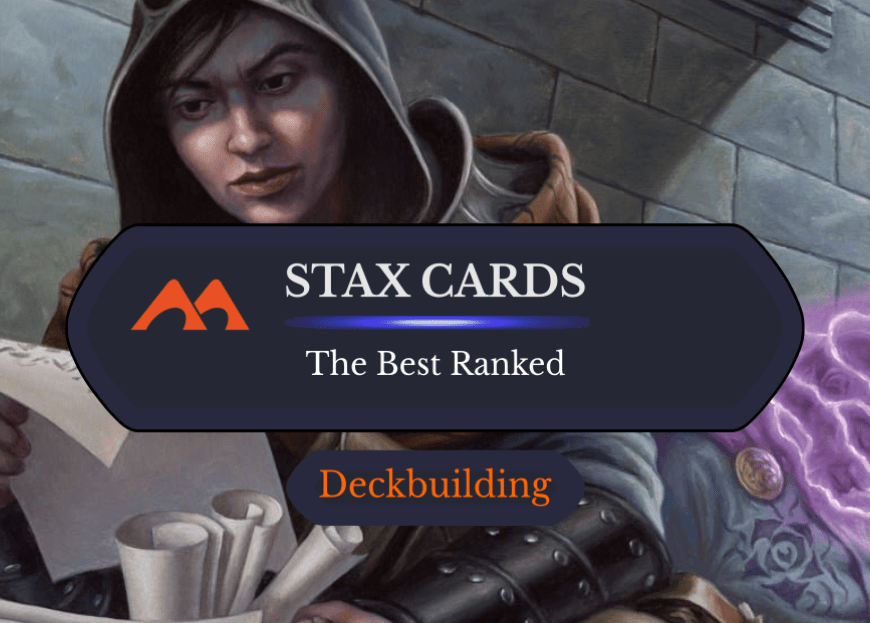
Add Comment